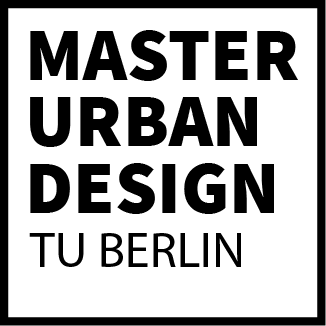Urban Planning Studio SS 2023
Europan 17 Barcelona
Tutors: Andreas Brück
Chair: Labor K and Urban Design and Development (Million), Institute of Urban and Regional Planning
Students:
Püren Bahcivan, Juan Castillo, Sophie Dilg, Öykü Dogru, Hoyul Jeon, Michael Krach, Yang Li, Katja Michel, Nisleida Angely Morales Ruiz, Moritz Remmele, Santiago Silvera Malagon, Lena Skade, Yunjie Zhang
As part of the studio project Europan 17 – Living Cities of the summer semester 2023, students of urban and regional planning and urban design dealt with the issue of the regenerative capacity of habitats in the midst of new ecologies, trying to overcome the opposition between nature and culture and anthropocentrism in times of natural disasters and climate emergency.
The scope of the project corresponds to a sector of the Besòs and Maresme neighborhood, in the Sant Martí district of Barcelona. It includes part of the housing estate in the south-west of Besòs and Maresme and is surrounded by the 22@ – Poblenou technological transformation zone, the Gran Vía de las Corts Catalanas, the Forum and La M | ina neighborhood, which belongs to the municipality of Sant Adrià de Besòs. In Besòs and Maresme, urban vulnerability is especially evident in housing, accentuated by the scarcity of public facilities and commercial premises on the ground fl oor for commerce and local uses. The public space is in poor condition and paved spaces predominate, with parking lots, few shaded spaces, and a lack of water and vegetation. In a climate emergency context, it is necessary to adapt homes, but also to transform public space. Proximity spaces are an essential piece for socialization in a dense neighborhood with great social vulnerability.
There are a lot of Programs and Plans which promote a Urban Agriculture, biodiversity and green structures such as the horticultural plan and the Biodiversity Plan “PlanNatura” but our focus area is not part of it to an extended and desired way. There is a lack of access to greenery in forms of urban agriculture. The Plans are being also challenged by factors like lack of space, climate and social cohesion participation Often the emphasis is on tree structures in an historical or heritage context. Urban agriculture and green infrastructure is therefor an important task to consider not only because it is part of the Europan Brief but also because a key task in El besos. The area’s urban development reflects the urban, social and political transformation the city has undergone in the last half century.

Whaterwhat: The el Besos i el Maresme water community design
The project aims to integrate water into the area in a sustainable and resource-saving way, and to retain rainwater on-site as best as possible instead of allowing it to run off into the sewer system. In this regard, we are guided by the principle of the sponge city.

Water scarcity during the summer months poses an additional challenge to residents, wildlife, and the environment. Climate change, with rising temperatures and unpredictable precipitation, further exacerbates this issue. To address these challenges, the team conducted extensive analysis, developed innovative design ideas.
 The goal of the design ideas was the creative implementation of the ideas of the master plan, such as the implementation of narrow watercourses as you can see in this example. With all the measures the team wants not only to protect the water resources, but also to improve the quality of life in Barcelona in a sustainable way.
The goal of the design ideas was the creative implementation of the ideas of the master plan, such as the implementation of narrow watercourses as you can see in this example. With all the measures the team wants not only to protect the water resources, but also to improve the quality of life in Barcelona in a sustainable way.
Cura Acupunctura: Fostering Cultures of Care With the Everyday Experts
In the spirit of the acupuncture method, the project aims to gently initiate an urban healing process. By applying the acupuncture strategy, a network of interventions is created based on the materialities of urban caring, named: Place, Access, Atmosphere, Openendedness, Continuity, Impact and Do-it-together, to improve the well-being of the entire neighborhood, rather than just targeting symptoms. The project shows the caring potential in El Besòs as a whole and creates interventions that relate to the main characteristics of a Caring City.

A key characteristic of care is, first and foremost, that it responds to the circumstances of need. Therefore, the design refers to the specific needs of the shared spaces of El Besos and Maresme and builds on existing social actor networks, observed local phenomena, practices, and existing infrastructures, especially those of green infrastructure and active mobility. To strengthen existing entanglements and enable new ones in El Besos, the interventions emphasize on community engagement, mixed-use development, enhancing public spaces, promoting active transportation, and supporting sustainable local businesses and initiatives. Additionally, foster interdisciplinary collaboration, prioritize green infrastructure, invest in art and culture initiatives, provide access to social services, and promote education and awareness on sustainable practices for a vibrant and interconnected neighborhood.



